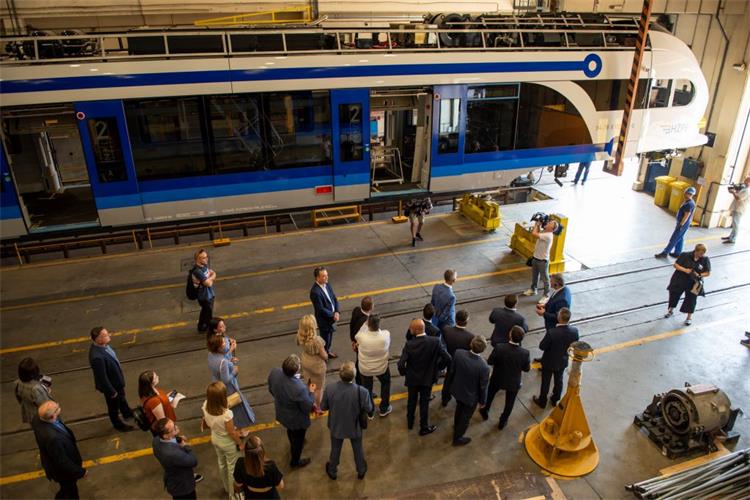During the visit of the Minister of the Sea, Transport and Infrastructure, Oleg Butković, to the KONČAR - Electric Vehicles production facility, in Ante Babaje Street in Zagreb this Tuesday, the delivery of the first in a series of electric trains to the operater HŽ Passenger transport by the end of 2022 was announced.
“It is truly a pleasure to see both this factory and the trains that KONČAR is producing for HŽ Passenger Transport. What should be commended is that we are using European funds in the procurement of new trains, delivered by Croatian companies. In this case it is Končar, a respectable, recognizable, renowned manufacturer of trains and trams. I think it is good that Croatian industry is reaping the benefits in this case. “, said Minister Butković. He concluded that the train manufacturing process is going very well, adding that the first train should be ready by the end of this year.
The order worth €141 million is part of the project “Renewal of the rolling stock of HŽ Passenger Transport with new electric trains”, and the funds for the implementation of the project were sourced from the Operational Programme Competitiveness and Cohesion 2014 – 2020. A total of 21 electric motor trains are being produced – 11 trains in the configuration for urban-suburban and 10 for regional transport. The procurement of new trains aims to encourage citizens to use rail transport as the most energy-efficient and affordable mode.
Renewal of over 50% of the fleet by 2024
The project, co-financed using European funds, represents the continuation of the modernization of the fleet of HŽ Passenger Transport, gradually solving the problem of the vehicle obsolescence. The increasing number of new motor trains enables the replacement of vehicles that are nearing the end of their service life.
In the first cycle of modernization, HŽ Passenger Transport acquired three prototype motor trains. After successful trials, in 2015 and 2016, 20 new electric and one new diesel engine train were purchased and put into service. According to the minister, the railway operator should have 70 new trains in its fleet by the end of 2024. Since there were 119 motor trains in HŽ Passenger Transport’s rolling stock in 2018, the scheduled pace of delivery means that new trains will soon represent more than 50% of the fleet.
“With the additional purchase of new trains, we will improve our service. We will provide passengers with greater comfort, greater capacity and more reliable transportation, and improve local and regional connectivity and mobility, hopefully attracting new passengers. In addition to this EU funded project, as part of the new operational programme for the 2021-2027 period, we plan to acquire new trains for non-electrified lines and modernize train maintenance capacities.“, Željko Ukić, the president of the Management Board, pointed out.
Domestic trains are state-of-the-art in terms of characteristics and quality
The trains produced by KONČAR – Electric vehicles feature three-phase asynchronous traction motors, powered by electronic IGBT converters, which enable a maximum speed of 160 km/h. The four-part low-floor compositions will be equipped with wheelchair ramps and bicycle storage, and the entire passenger section will be under video surveillance. The interior design will be bright and comfortable, with panoramic tinted windows for a comfortable journey.
Regional trains will have 4 doors on each side. Most of the space will be filled with double-seats, with a capacity of 209 seated and 222 standing. Due to the fact that the requirements in suburban traffic are different, city-suburban trains will have 8 doors on each side of the train. Most of the seats will be singles, providing a capacity of 130 seated and 385 standing. Along with visual and voice announcements of stations and stops, passengers will be provided with free internet access (WiFi). The length of the train is 75 m, and the train management system allows coupling up to three trains into a single composition.
Outside the scope of the project, Minister Butković foresees an opportunity for Croatian manufacturers in the upcoming procurement of two battery train prototypes, worth €13.3 million, through the National Recovery and Resilience Plan (NRP). Tenders for the procurement of twenty new trams for Zagreb and ten for Osijek have also been announced.




